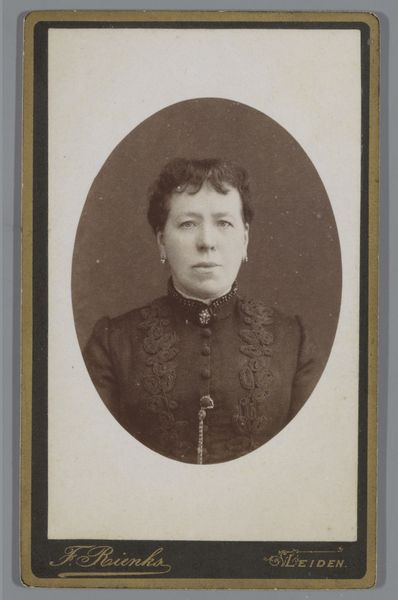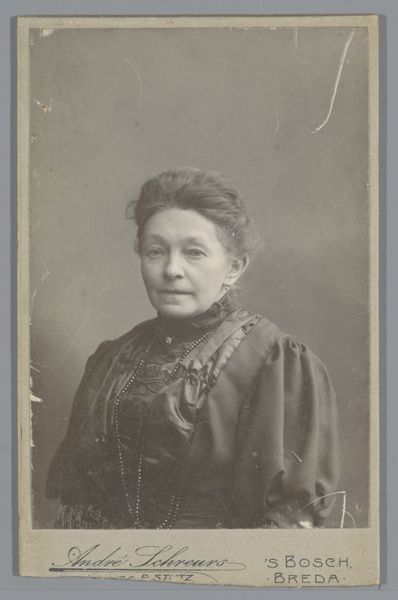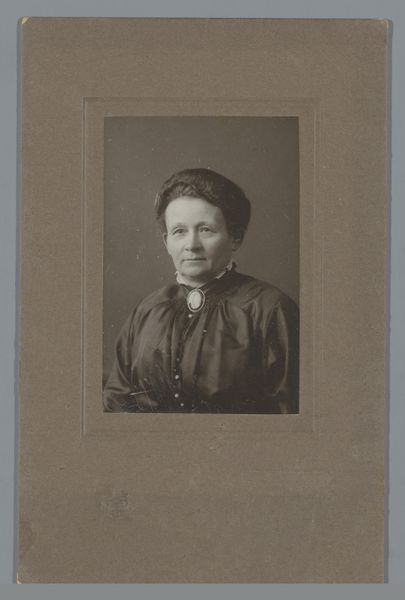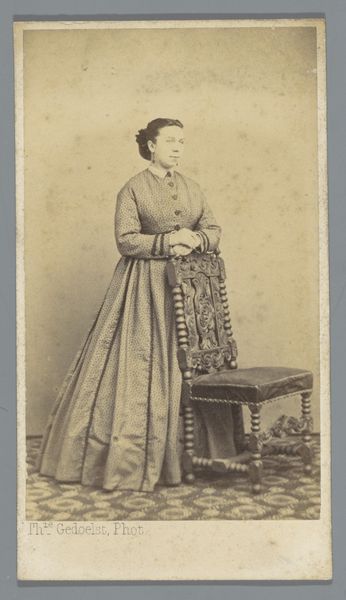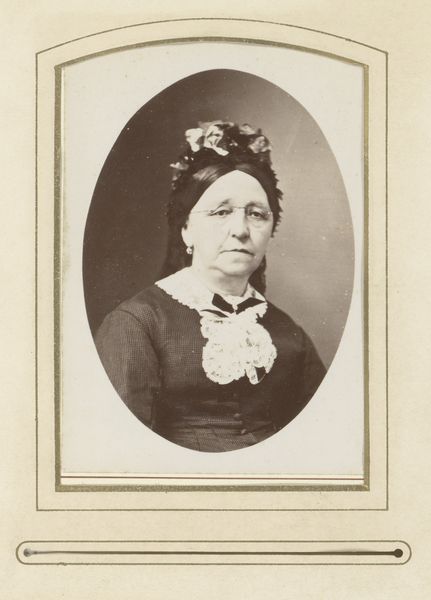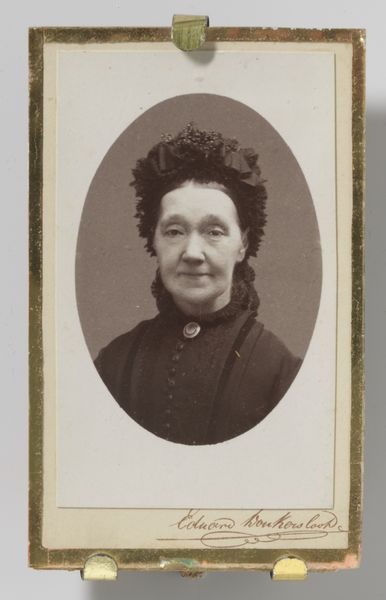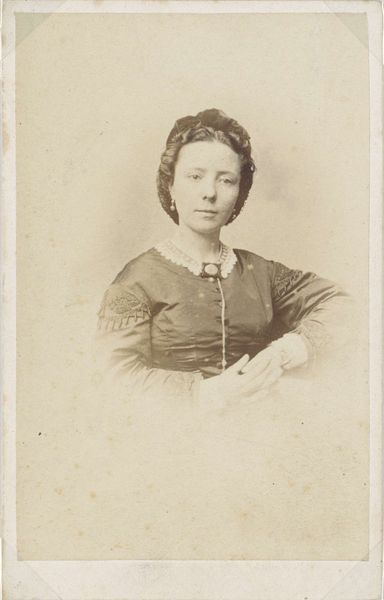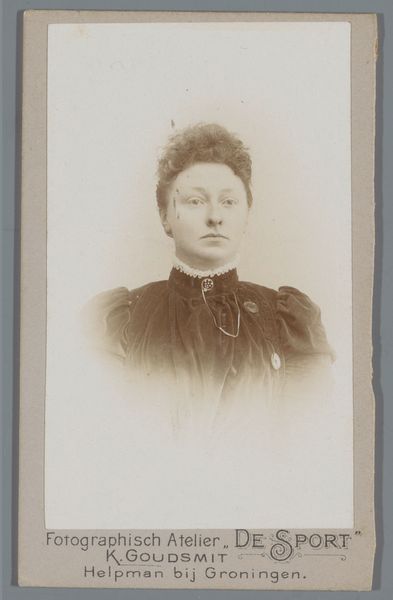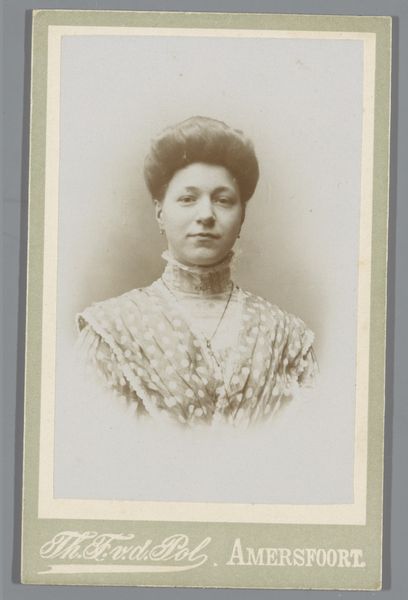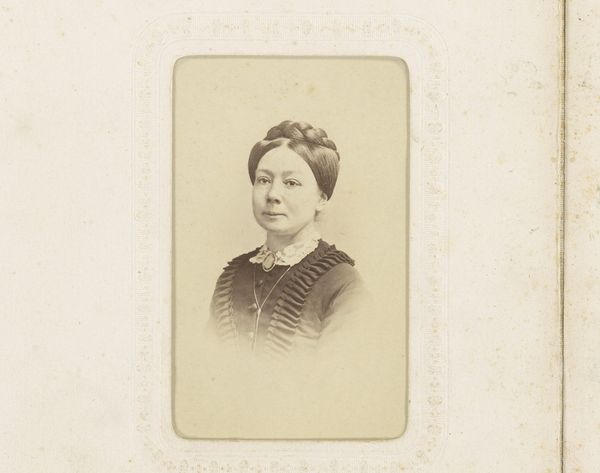
Dimensions: height 103 mm, width 64 mm
Copyright: Rijks Museum: Open Domain
Curator: What a fascinating find! We're looking at a gelatin-silver print, a photograph from around 1894-1898, attributed to Reinier Uges. It’s titled "Portret van een onbekende vrouw," which simply translates to "Portrait of an Unknown Woman." Editor: It's quite striking, even with the limited tonal range typical of gelatin-silver prints. She looks directly at the viewer with such solemnity. There’s a stillness, almost a vulnerability, in her gaze. I immediately wonder what stories she holds, what her daily life might have been like. Curator: Absolutely. Understanding photography of this era requires a deep dive into social and cultural practices. Studio portraiture in the late 19th century became increasingly accessible to the middle class. These images weren't just aesthetic objects; they were powerful tools for constructing and representing identity. How did people wish to be seen? What role did gender play? Editor: Her attire speaks volumes. The high-necked blouse, the delicate necklace, the meticulously styled hair – these all conform to societal expectations for women of that period, but, look closer! Her expression almost subverts that. The photograph becomes a study of tensions, of the constraints placed upon women while they navigated a rapidly changing world. Curator: Indeed. This image complicates the narrative. She’s not just passively adhering to conventions, there's something in the firmness of her jaw and in her unwavering gaze that pushes back against those very expectations. The rise of photographic studios afforded women more opportunities, though not necessarily complete autonomy, in crafting and displaying their image. Editor: Precisely! The very act of choosing to be photographed was, in its way, an assertion of self. The photograph served as a tool for social mobility, or at the very least, a way of preserving a moment for future generations. Think about how family albums and studio portraits were important markers in a society rapidly being changed by industrial capitalism. Curator: Right. Now we are confronted with a tension. It's a shame we don't know her name, but her image offers a compelling study on societal norms and individual identity in that specific moment of social history. Editor: This "unknown woman" now symbolizes countless unnamed people, specifically women, negotiating that complicated period and her picture serves as reminder to value the quiet stories hidden in archives.
Comments
No comments
Be the first to comment and join the conversation on the ultimate creative platform.
